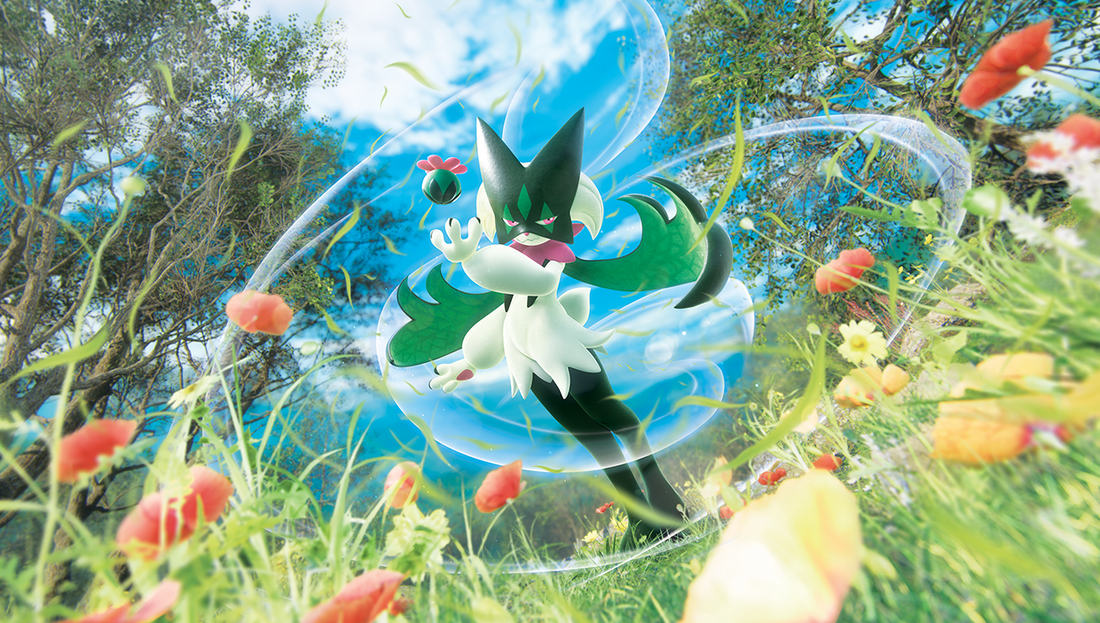The Evolution of Pokémon TCG: From Base Set to Paldea

Since its North American debut in 1999, the Pokémon Trading Card Game (TCG) has evolved from a simple collectible game into a complex, competitive, and beloved global phenomenon. With each new generation of games and anime came new mechanics, card designs, and gameplay formats. This blog takes a deep dive into the evolution of the Pokémon TCG — from the nostalgic Base Set to the latest Scarlet & Violet: Paldea expansions.
1. Major Format Eras in TCG History
Wizards of the Coast Era (1999–2003)
The beginning. Sets like Base Set, Jungle, Fossil, and Neo Genesis laid the foundation. Energy cards were basic, Trainers were often overpowered, and rules were still evolving.
Key Features:
- Simpler mechanics
- Iconic art and minimalist design
- Hit cards: Base Set Charizard, Blastoise, Neo Genesis Sneasel
EX Era (2003–2007)
This era introduced a new power level: Pokémon-ex. These cards were stronger but came with a drawback—your opponent took two prize cards when knocking them out.
Key Features:
- Introduction of Pokémon-ex
- Holon engine (Delta Species mechanics)
- Hit cards: EX Deoxys Rayquaza ex, Holon Phantoms Mew δ
Sun & Moon Era (2017–2020)
This generation introduced GX attacks—once-per-game powerful moves—and Tag Team cards, which brought massive HP and game-shifting effects.
Key Features:
- GX mechanics and Tag Team cards
- Power creep becomes more noticeable
- Hit cards: Reshiram & Charizard-GX, Ultra Necrozma-GX
Sword & Shield Era (2020–2023)
A dramatic shift with V, VMAX, and later VSTAR cards. Pokémon became tankier, and formats revolved around who could build massive attackers faster.
Key Features:
- Dynamax adapted into VMAX
- Introduction of VSTAR powers
- Hit cards: Arceus VSTAR, Mew VMAX, Zacian V
Scarlet & Violet Era (2023–Present)
The return of the classic ex mechanic (lowercase) with new twists like Terastal Pokémon, which introduced abilities that protect from bench damage or add energy acceleration.
Key Features:
- Revised Pokémon-ex system
- Terastalization mechanic
- Sleek silver borders and a visual refresh
- Hit cards: Miraidon ex, Charizard ex, Iron Valiant ex
2. How Mechanics Have Evolved Over Time
| Era | Core Mechanic | Signature Trait |
|---|---|---|
| Base Set | Evolution, Trainers | Simplicity, minimal rules |
| EX | Pokémon-ex | High reward, high risk |
| Sun & Moon | GX, Tag Teams | One-time moves, high HP |
| Sword & Shield | V, VMAX, VSTAR | Tanky, strategic play |
| Scarlet & Violet | ex, Terastal | Balanced power, new visuals |
The Pokémon TCG has always rebalanced itself to adapt to evolving player needs. From Energy acceleration in Base Set to once-per-game VSTAR powers, every era has pushed creativity forward — both for players and designers.
3. Most Impactful Sets & Cards (Per Generation)
Base Set Era:
- Charizard (Base Set) — High damage, fan favorite
- Blastoise (Rain Dance) — Early energy engine
EX Era:
- Rocket's Zapdos ex — Aggro deck powerhouse
- Mew ex (Legend Maker) — Versatile and efficient
Sun & Moon Era:
- Zoroark-GX — Dominated Standard for over a year
- Pikarom (Pikachu & Zekrom-GX) — Set tempo for the meta
Sword & Shield Era:
- Arceus VSTAR — Versatile VSTAR power
- Mew VMAX — Fast, consistent, and hard to counter
Scarlet & Violet Era:
- Miraidon ex — Electric deck enabler
- Charizard ex (Obsidian Flames) — Powerful comeback tool
4. What’s Next for the Pokémon TCG?
Looking ahead, here’s where the TCG may be headed:
- More crossover designs, like Ancient/Future Pokémon and Paradox forms
- Deeper digital integration with Pokémon TCG Live
- Expansion of energy types and hybrid energy mechanics
- Continued experimentation with simplified mechanics for newer players
The TCG continues to innovate while honoring its legacy — striking a balance between veteran players and new trainers picking up a deck for the first time.
